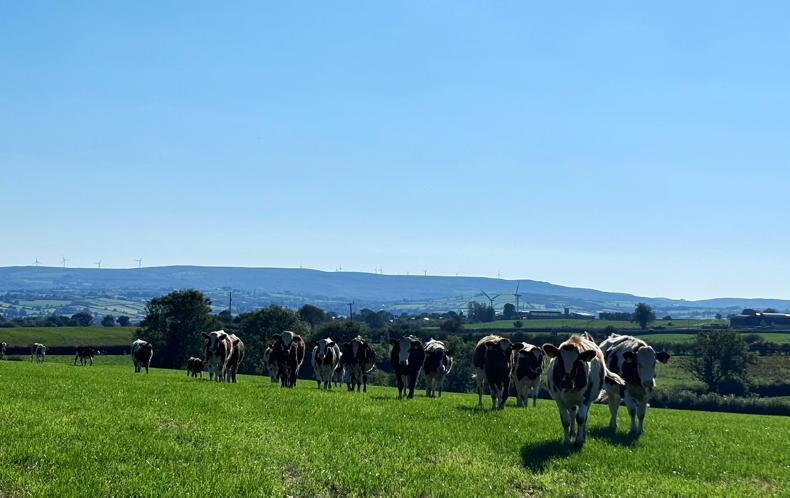It’s been a hectic month since my last update, but despite the workload, it’s been a pleasure to work in such mild conditions and not often needing a raincoat.
We had our first farm walk in October.
The timing might not have been perfect as I was right in the thick of calving, but I was pleased with how it went and delighted to get such a great turnout in Castlederg.
The weather couldn’t have been better on the day - mild, dry, and with the spring calving milk cows out on grazing - I’m sure it made a few question Why I often complain about the weather!
Grazing
Like many other farmers, I probably stopped measuring grass too early this year.
Grass growth has continued well into autumn, and fields that were grazed bare back in October now have covers that we’d expect to see in spring.
On reflection, I’m not sure the grass measuring tool was as useful this summer, especially when we were either short on grass or couldn’t graze certain fields due to wet grazing conditions.
That said, I can definitely see the value from previous years of measuring grass during rapid growth periods, as it helps to remove surplus grass from the grazing platform, maintaining grass quality and ensuring optimum use of the grass we are growing.
Housed
Two weeks ago, we housed the entire milking herd after a weekend of heavy rain.
We made the decision to keep the younger stock out for a bit longer and try to push milk yields inside a little more.

The autumn 2023 heifers and spring 2024 heifers are still grazing, supplemented with 2kg of an 18% blend daily.
These animals are thriving and will stay out as long as the mild, dry weather holds. The autumn batch of heifers is due to be served at the end of December, and they’ve already exceeded their target breeding weight, averaging 390kg.
It’s great to see the heifers thriving outdoors at this time of year. There are also the added benefits of prolonging our silage stocks and reducing slurry production, which should leave us in a more comfortable position heading into the unknown winter and spring months.
Calving Progress
We are well through the autumn calving block now, with over 85% of our autumn batch calved, so it is one of our tightest calving windows to date.
Calves are fed four litres of whole milk twice a day, which isn’t that common these days, but we’ve found it works best on our farm.
We’ve tried milk powders in the past, but calves have thrived better for us on whole milk.Feeding whole milk does come with risks such as the spreading of diseases including Johne’s, but this year we’ve invested in a calf milk pasteuriser to reduce the risks. So far, the calves are thriving with minimal issues, including scours.
We operate two distinct calving blocks; each block has its own set of advantages and challenges, so it’s hard to directly compare them.
However, one clear benefit of autumn calving is that we see significantly fewer health issues, especially scours, compared to the spring born calves.
Despite washing and disinfecting all the housing between the two calving periods, spring calves tend to have more health problems that require treatment.
We’ve previously tried vaccinating cows to reduce scours, but we’ve not done so for the autumn calving batch in the past two years, and it doesn’t seem to have made a noticeable difference
I had expected that the very mild autumn might result in more health issues, especially for the young calves, but thankfully our grouped calf pens are well-ventilated, and we haven’t seen any major problems.
Feeding whole milk does come with the potential that it could help spread disease, including Johne’s, but this year we’ve invested in a calf milk pasteuriser to reduce the risks.
So far, the calves are thriving with minimal issues, including scours.






 This is a subscriber-only article
This is a subscriber-only article










SHARING OPTIONS: